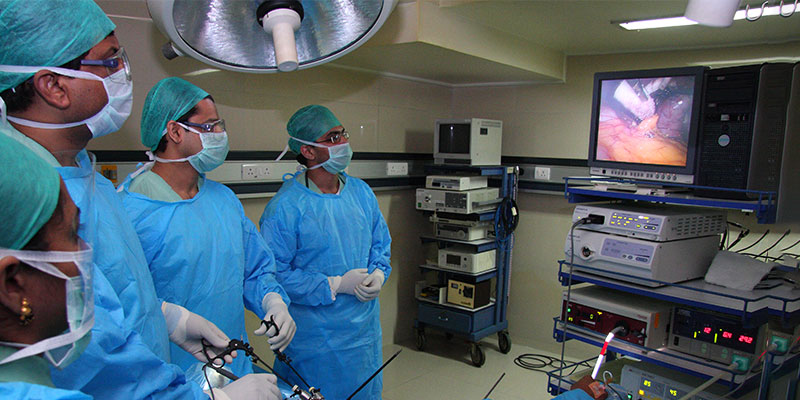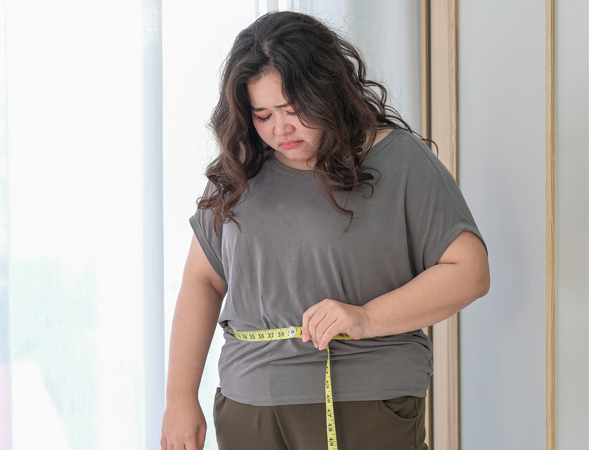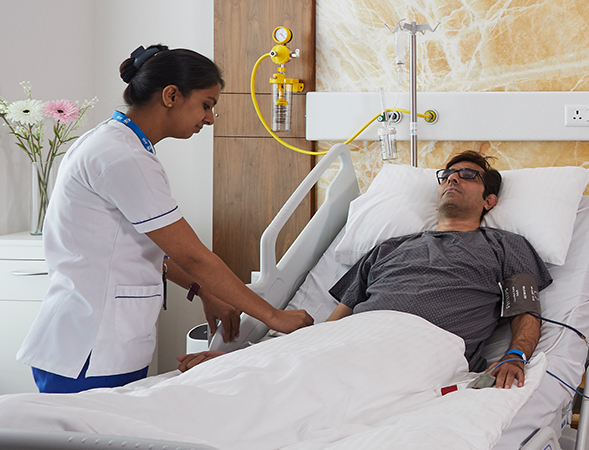Obesity is a major risk factor for many debilitating chronic conditions. Thus, there is a great demand for better and safe anti-obesity treatment options. Standard weight loss procedure and gastric restriction procedures require a single large incision or multiple incisions in the abdomen that may increase risks such as infection, scarring and pain. But with the advent of minimally invasive procedures like per Primary Obesity Surgery Endoluminal (POSE), complications are rare.
-
About the procedure +
Primary obesity surgery endoluminale (POSE) is an advanced minimally invasive procedure available for gastric reduction without a single incision. It also doesn’t involve the use of a laparoscope. The procedure is safe and feasible and has least risk of complications such as infections, scarring, and pain. This procedure also has other benefits such as short-term hospital stay, faster recovery and reduced risk of infections.

Successful implementation of this procedure requires a team of specialists such as endocrinologists, gastroenterologists, dieticians, psychiatrists and physical therapists.
-
Individuals eligible for the procedure +
This procedure is indicated in obese individuals who are not suitable for bariatric surgery and for those individuals who are willing to have a permanent solution for improving satiety.

POSE is highly recommended in individuals with a body mass index between the range of 30- 40 kg/m2, in whom diet, and other weight loss treatments has failed.
-
Before the procedure +
Before the procedure, the doctor would ask questions pertaining to patient’s health and perform a detailed physical examination. The patient should inform the doctor about his/her current medications and history of allergies. The doctor may advise certain tests like blood tests, chest X-ray and ECG to evaluate the general health of the patient and fitness for surgery. The doctor may ask the patient to avoid eating and drinking anything 12 hours before the procedure.
-
During the procedure +

For this procedure, an endoscopic tube which has holes to insert special instruments, is used. It is a flexible tube, that is inserted in the mouth and is passed into the stomach through the esophagus. Once it reaches the stomach, the tip of the tube is turned and locked in a position known as the “stable surgical platform” to perform the procedure. Next, special instruments are passed through the holes of the tube. These special instruments include, a scope to visualize the surgical site, tissue anchors, and instruments to grab the tissue and place the anchors.
The tube is placed in the fundus (top of the stomach that expands to accommodate large meals). The tools, then grab the tissue of the stomach wall and place the anchors. By this method, the tissue in the fundus is gathered into “folds” and “anchored”, which reduces the capacity of the stomach and its ability to expand. A sufficient number of folds are anchored into the fundus to achieve the desired result. Now, when food fills the stomach, the folds in the stomach causes its stretch receptors to be activated early. This sends a signal to the brain, indicating that the stomach is full and so, the individual’s hunger is satisfied, without indulging in large meals.
The procedure usually takes 60 to 90 minutes. An individual is able to go home the following day and go to work in a few weeks depending on the recovery and type of work performed by the individual.
-
After procedure care +
After the surgery, the patient is shifted into a recovery room for an hour or more, till the effect of anaesthesia comes down, and the patient is conscious again. The patient may experience sore throat, bloating, nausea, and vomiting that can resolve on its own within a few days or can be treated by taking an over the counter medication.
Usually, a liquid diet can be started after 12 hours of surgery. The patient may need to follow a special liquid diet for the first month, then semi-solid diet is slowly introduced for next six weeks, after which solid diet can be taken. A follow up is required upto two years evaluate patient’s recovery and the effect of the procedure.
Weight loss begins at the first week, and considerable weight loss is evident within first 6 months. The patient eventually feels less hungry and also has reduced cravings for sugary and fatty foods.
The complications are rare, but as any other procedure, it may carry some risks, which varies from person to person. Thus, it is recommended to discuss well with the concerned health practitioner, before choosing the procedure.
-
Advantages of POSE procedure +
The procedure is reliable, well tolerated and can be carried in obese individuals for whom other treatments options have failed or those who cannot undergo bariatric surgery. POSE has several advantages over other weight loss surgeries:
- No rerouting of the bowel is required
- No devices are left inside
- No removal of any part of the stomach
- No incision is required
- Very low risk of complications like scarring, pain, or infections
Importantly, it is a procedure that helps the individual who crave for unhealthy food. This approach of reducing weight can improve the overall health of the individual as shedding even a few kilograms reduces the risk of obesity comobidities.
References
https://www.nationalbariatriclink.org/pose-incisionless-weight-loss-surgery.html
https://www.sciencedirect.com/science/article/abs/pii/S1550728914003682
https://www.giejournal.org/article/S0016-5107(14)01661-7/abstract
- 1


